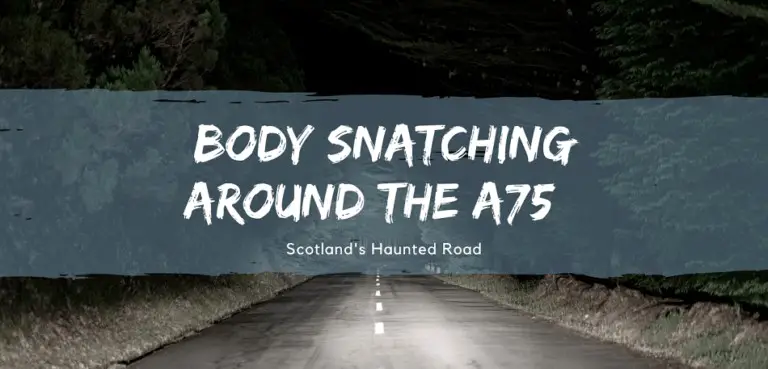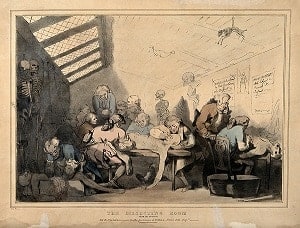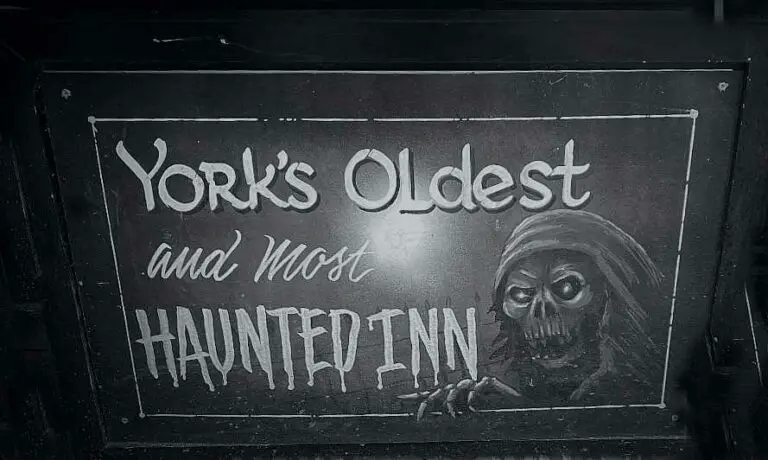Edinburgh Greyfriars | The Most Macabre Graves To Visit
Take a trip to Scotland’s capital city, Edinburgh, and even if graveyards and the macabre aren’t your ‘thing’, I can pretty much guarantee you’ll find yourself wandering through the famous gates of Edinburgh Greyfriars.
There are just over 700 gravestones in the historic Greyfriars Kirkyard in Edinburgh, some with a more macabre history than others. Burials were granted on the site from 1562 after the original graveyard at St Giles had become noisome and extremely overcrowded. Surviving a fire in 1845, and with the Kirkyard closing its gates to the city’s dead in the 1870s, it remains one of the most iconic landmarks within the city.
Known worldwide for its links to Harry Potter and for being the most haunted graveyard in Edinburgh, if not the world, Greyfriars has its main entrance at the top of Candlemaker Row at No. 26A to be exact.
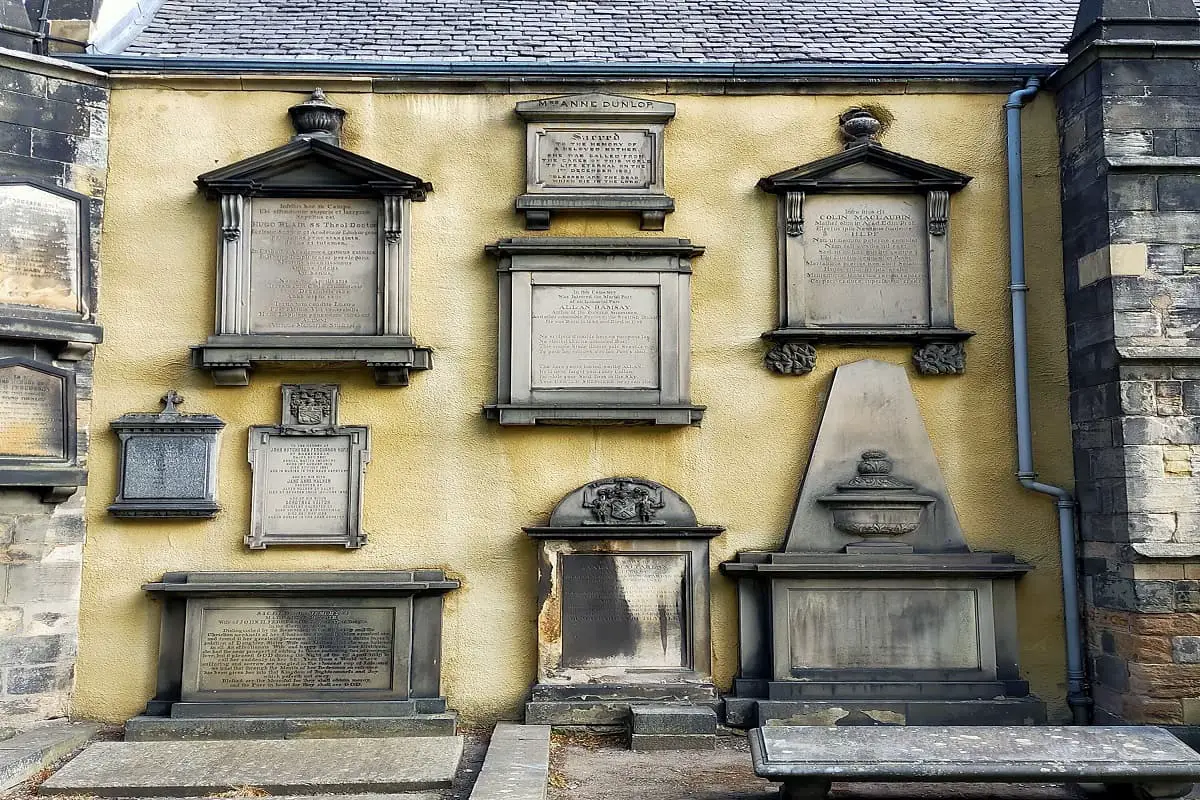
I’m a massive fan of Greyfriars and try to fit a visit in every time I go to Edinburgh, and every time my reasons for visiting are the same – to hunt out the macabre and to visit the haunts of Edinburgh’s body snatchers.
This means that there are certain areas of the kirkyard that I MUST visit to make my visit worthwhile, so grab your city guide, and refillable water bottle (we can all do our bit right) and let me share with you some MUST VISIT gravestones and caged lairs within this world-famous graveyard.
The official website for Greyfriars Kirkyard is worth taking a look at before you visit, especially the ‘visit us’ tab as current opening guidelines are given and regularly updated.
The Famous Edinburgh Greyfriars Mortsafes
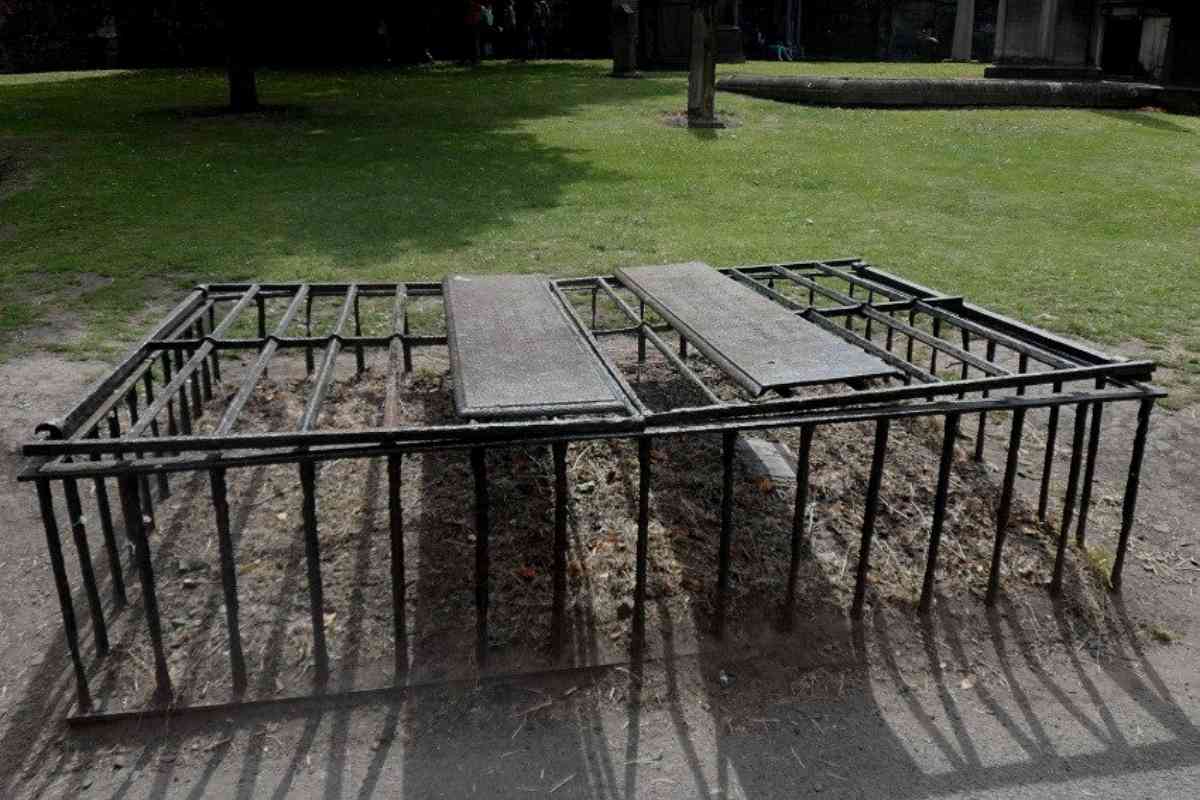
Walk up to the main gates of the kirkyard and no doubt if you’re like me, you‘ll take a peek past the tourists – Greyfriars is rarely quiet – and see what lies ahead.
Cast your eye over to the doors of the Kirk and then slowly past the Kirk itself and over to the left. The low metal boxes that you see embedded into the grass are the ‘world famous’ mortsafes of Greyfriars. Located on the path edge, on the left-hand side of the Kirk these two mortsafes, are known as ‘double bedders’.
Constructed for the more affluent members of Edinburgh society – one mortsafe, the one constructed entirely out of iron – bears the date, 1829 and is the most ‘originally complete’ of the two.
Did you spot the date? 1829 is the same year that infamous murderers Burke and Hare were finally sentenced for their crimes and in which William Burke was hanged and himself sent off for dissection.
The second mortsafe, having been restored in 2010 by the Greyfriars Kirkyard Trust with support from Edinburgh World Heritage, only has one original iron bar left in it.
The grave is said to have been built for the two daughters of Major M. E . Lindsay who died in 1837 and 1838, the fear of body snatching still being extremely prevalent in the family, as well as in Edinburgh, despite the Anatomy Act being passed in August of 1832 promising an end to this macabre practice.
To find out more about the Edinburgh World Heritage charity, and to discover FREE downloadable self-guided graveyard trail of Greyfriars and other Edinburgh graveyards, just visit their website at the link above.
For information specifically for Greyfriars itself, then visit the Edinburgh Graveyard Project which has heaps of links to additional information that you may be interested in.
The Dancing Skeleton & The Grave Of Surgeon John Borthwick

With its hips flattened against the stone wall of the eastern gable of the Kirk, the skeleton depicted on the tombstone of seventeenth-century anatomist James Borthwick of Stow, is certainly not one to be missed.
Borthwick, admitted to the Incorporation of Surgeons in Edinburgh in 1645 as a ‘Master Surgeon’, was the first surgeon in Edinburgh to be employed in this new type of teaching role – a role that was to teach apprentices anatomy.
What hits you first about this tombstone is the skeleton that appears to be dancing right in the centre. This is the King of Terrors, holding the book of Destiny and the just to say visible scythe of Father Time. Borthwick’s memorial (he died in 1677) also bears the symbols relating to his profession – knives, scalpels, syringes – in the panels or ribbons on either side of the stone.
Look closely along the bottom ridge of the tombstone and you’ll also see the tools of the sexton crossed behind a coffin in the two bottom corners, not to mention one of the smallest skulls and crossbones within Edinburgh Greyfriars.
The ‘Black Mausoleum’ And The Mackenzie Poltergeist
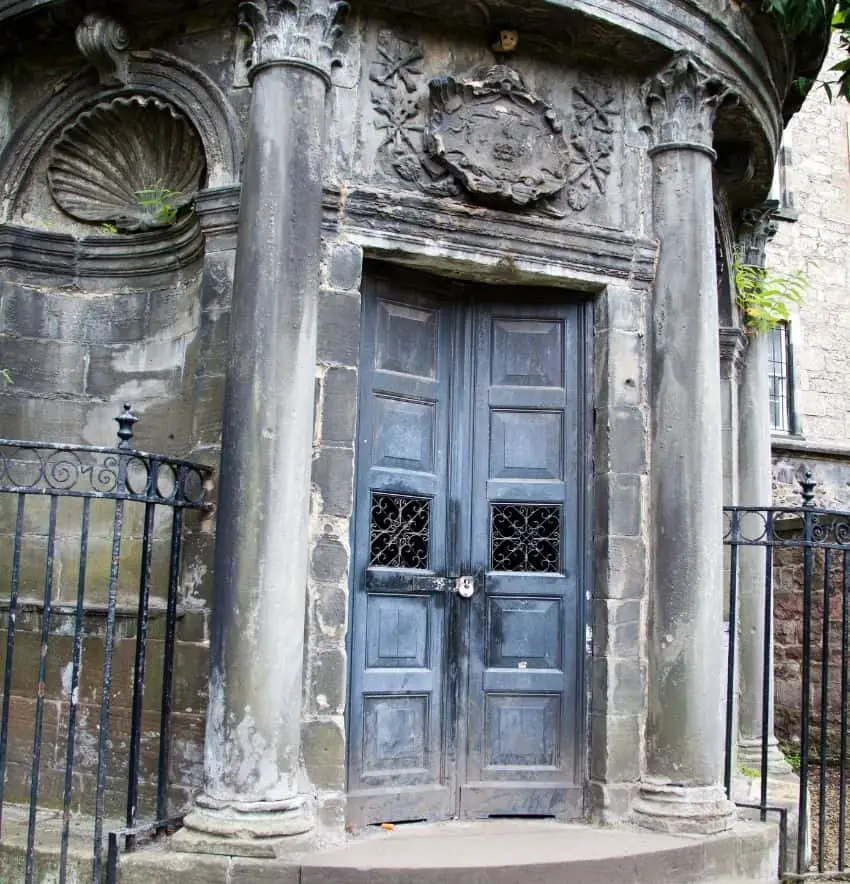
When it comes to all things relating to the paranormal, it may come as a bit of a surprise to some of you when I say I’m absolutely terrified of such things, but you can’t have a macabre visit to Greyfriars without a visit to The Black Mausoleum.
This almost iconic mausoleum can’t be missed and is on the left-hand side of the kirkyard as you enter the site through the main gates.
With its domed roof and striking double doors, this neo-Classical building is the ‘final’ resting place for Sir George Mackenzie (1636/1638-1691) or ‘Bloody Mackenzie’/‘Bluidy Mackenzie’, best known for his zealous persecution of the Covenanters during the reign of Charles II.
The ‘Killing Times’
Becoming Lord Advocate in 1677, Mackenzie dedicated himself to his new role and later would earn himself an unsavoury reputation as being the most zealous persecutor of Covenanters during what is referred to as, the ‘Killing Times’.
Imprisoning and torturing over 1000 Scots in a make-shift prison in a field which was, at the time, next to the Kirkyard and which is now located in the kirkyard itself, many of the Covenanters imprisoned here suffered from the cruelty of this man. (See following entry)
Known for its paranormal activity, the ghost of ‘Bloody MacKenzie’ has little peace and is perhaps the most famous, and possibly the most active poltergeist in Scotland.
Tales of visitors being pinched, burnt or bruised abound and if you’re brave enough, you too can see if Mackenzie will have ‘a go’ at you during a City of the Dead Haunted Graveyard Tour meeting nightly at the Tree of the Dead by the roadside wall at St Giles’ Cathedral. Just remember to reserve your spot first!
Modern Day Break-ins
The mausoleum itself also has little peace for it has been broken into a couple of times in recent years. The first was in 1999 when a homeless man was seeking shelter and managed to break into the tomb only later to be plunged through the floor.
Through the window is supposedly an iron grill (I’ve yet to pluck up the courage to get that near to the mausoleum I’m afraid) and while some accounts say that this is a mortsafe, chances are it is more likely to be a modern health and safety measure covering the hole which the intruder created.
In 2004, in true body snatching style, two youths broke into the MacKenzie tomb and cut the head from a corpse! Little did they know that they would be charged with a crime that hadn’t appeared in the law courts of over 100 years, that of ‘violating a sepulchre’.
They are certainly A LOT braver than I’ll ever be!
Covenanters Prison
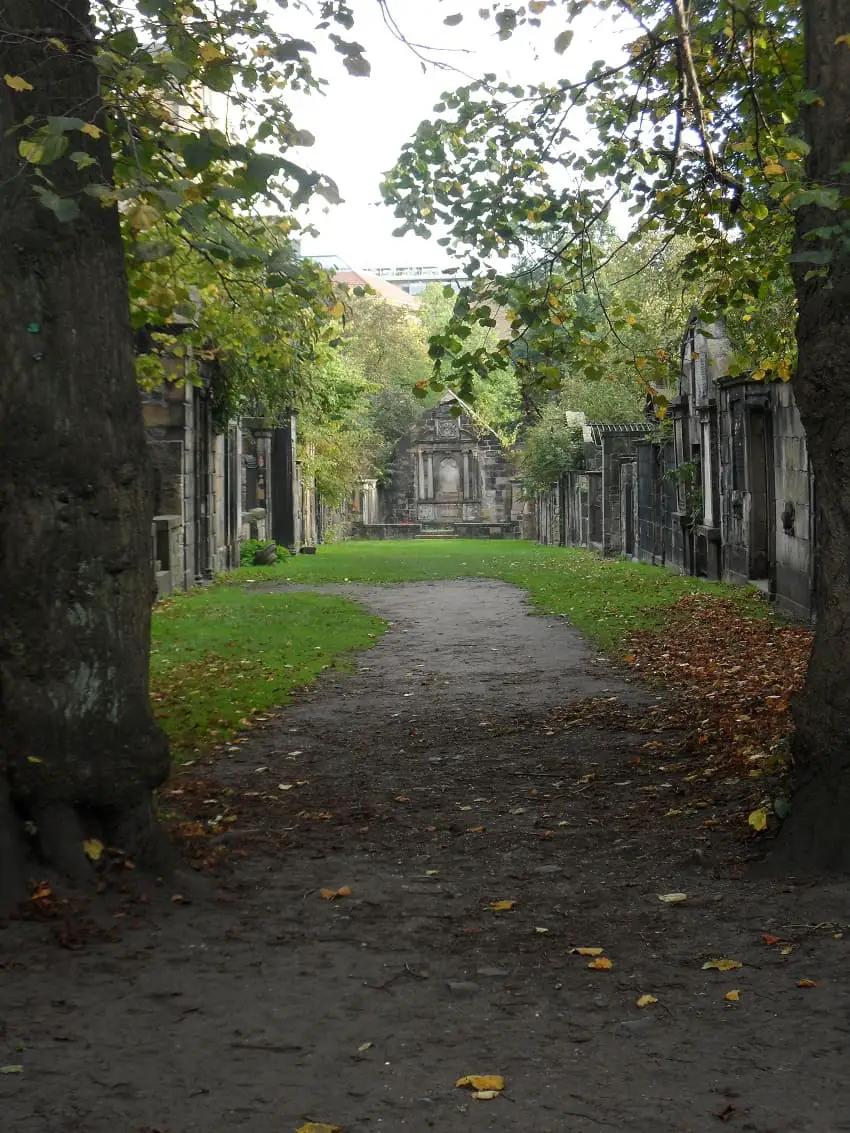
Tucked away in the far left corner of the main kirkyard is the Covenanters prison. Locked to the public since 1990, the site is now only accessible on a City of the Dead Haunted Graveyard Tour.
This makeshift prison was in use for four months in the year 1679, its many prisoners being refused shelter and given only a mere 4 ounces of bread a day.
Their crime was to support the National Covenant and defend the established religion in Scotland and once rounded up and thrown into the makeshift prison, they were tortured and cruelly treated until many lost their lives.
Although not containing the graves of any of the Covenanters themselves, the graves behind the locked gates date from 1705, the site, still gives off an impending sense of loss, and I’ve always found it a very sad part of the Kirkyard.
Finding Memorials
You can search the memorials in Greyfriars Kirkyard on the Find A Grave website where some of the information for this post was found including reference to 257 men who survived their time in the Covenanters Prison and were instead sentenced to transportation.
Their ship sadly was caught in a storm off the Orkney Islands and was wrecked, losing 209 of the men on board. If you are carrying your tour of Scotland, you may like to know that there is a memorial to the men who lost their lives on the island in the form of a stone tower, set overlooking the head of Scarvataing.
The Creepy Wee Bookshop
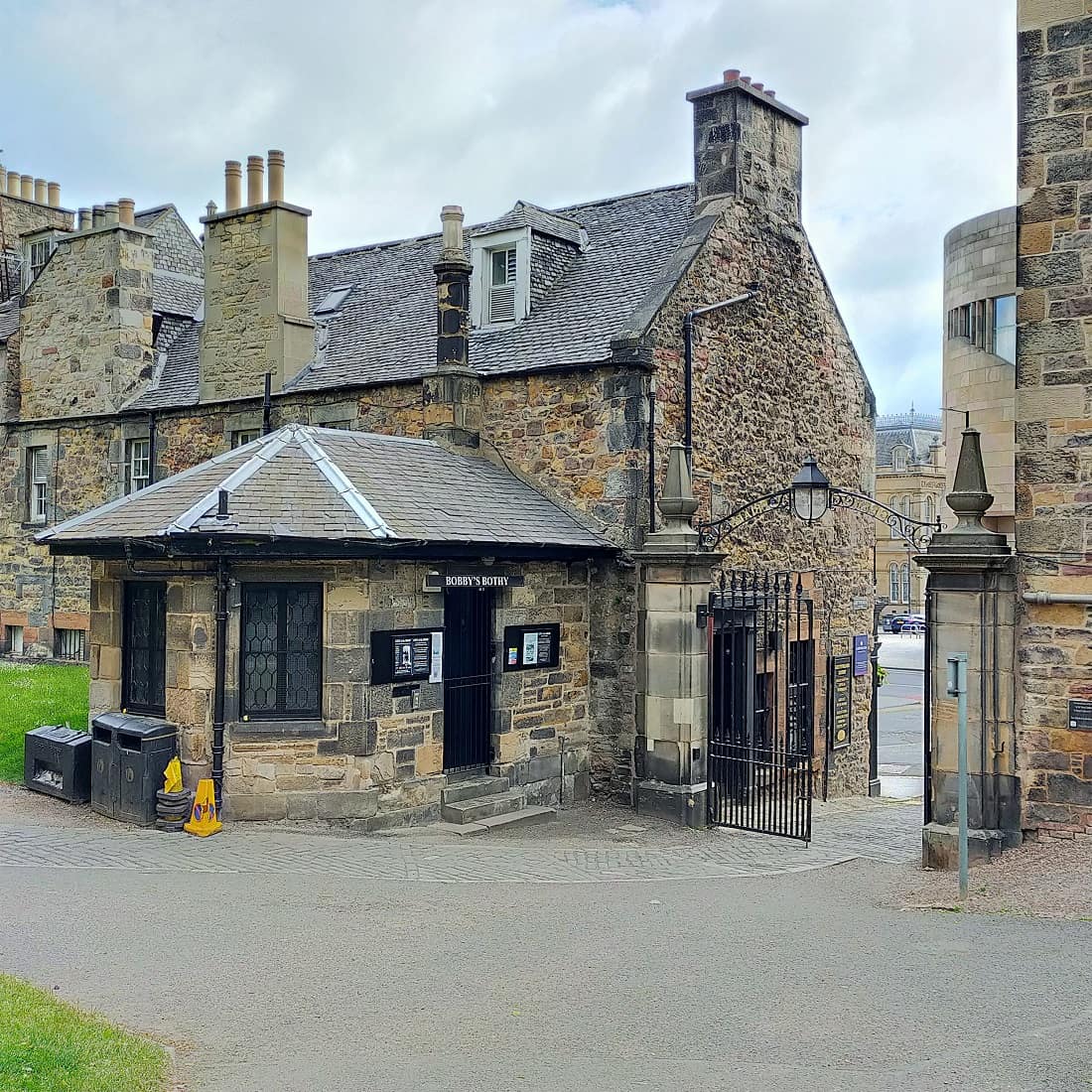
Just to the right of the main kirkyard gates lies ‘The Creepy Wee Bookshop in the Graveyard’ which also acts as the booking office for the City of the Dead Tours – named as one of the UK’s spookiest tours by the Sun Newspaper!
But did you know that this bookshop was once the watch house for Greyfriars Kirkyard?
If you stop for a moment before exploring you’ll notice the three windows facing out over the graveyard and a small chimney nestling at the back against the graveyard wall.
It is said the watch house was built in the 1830s which seems rather late to me considering the level of body snatching occurring in the graveyard by this period.
Nearby kirkyards such as St Cuthbert’s erected their watchtower in 1827 after efforts to stop the body snatchers fell short with the raising of the perimeter wall as early as 1738.
The ‘wee bookshop’ is truly amazing and I guarantee you’ll end up buying something! If you want to wander inside, the shop is open from noon till 7.00 pm except Sundays and also after each Haunted Graveyard Tour so what are you waiting for!
Caged Lairs
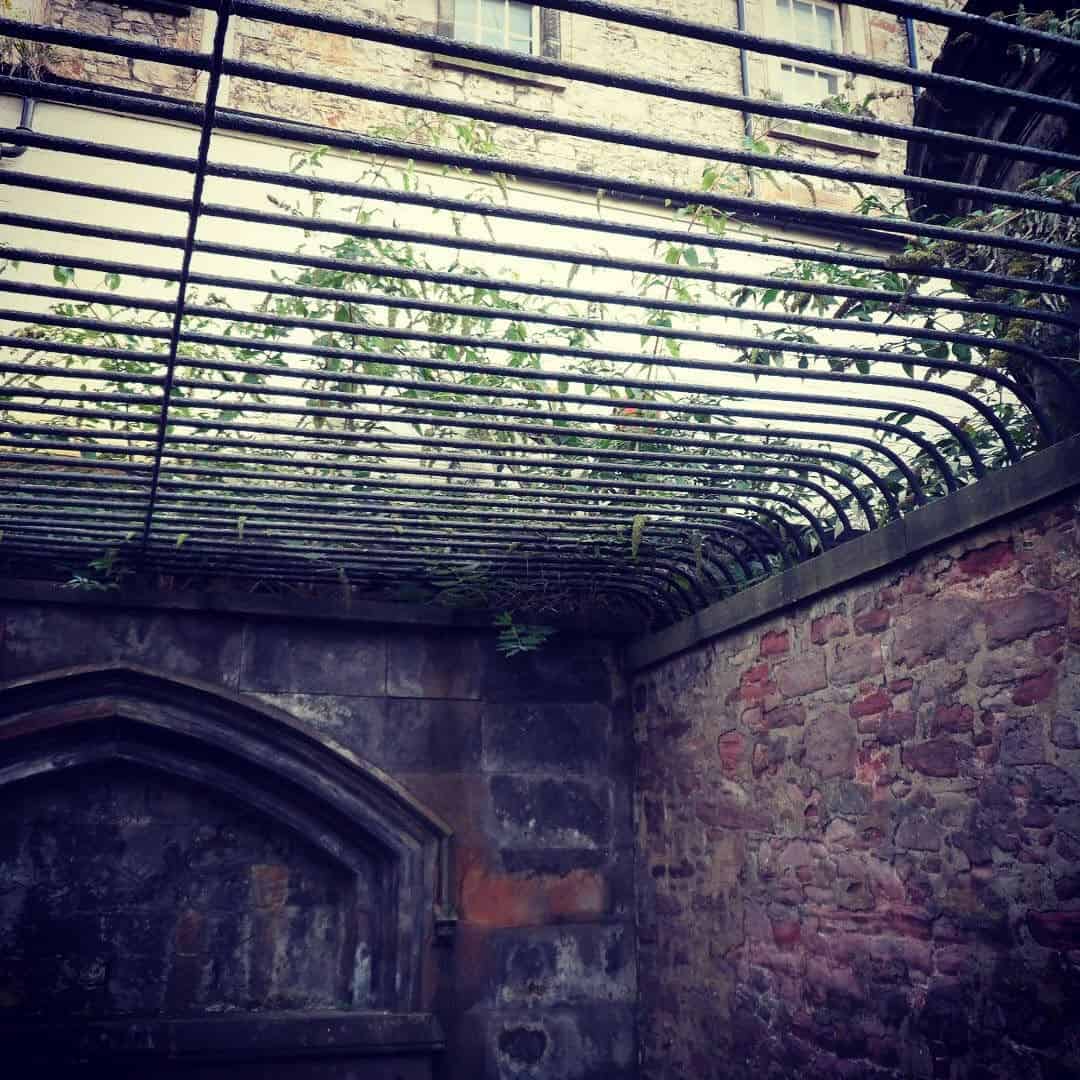
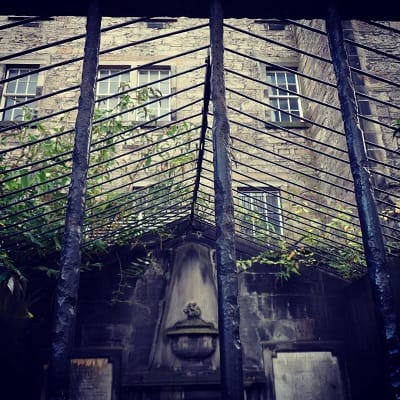
The ultimate in body snatching prevention, the caged lair was the body snatching prevention of choice for the elite, and Edinburgh Greyfriars has an abundance of them.
Caged lairs essentially came in two styles, either stone structures with a slatted metal roof like the ones lining the walls at Greyfriars, or complete iron cages like the ones found at Ramshorn Kirkyard, Glasgow.
The majority at Greyfriars are to be found along the left-hand side of the kirkyard as you walk through the main entrance, the caged lairs here look more like a plain bank of tombs rather than some of the most iconic body snatching relics around.
Sadly, however, most of the lairs are damaged in some way or another, but on the plus side, you can pretty much walk into each one along the ‘strip’, wondering if the inhabitants are still interred or not.
As you walk along, just take a glance up and you’ll see that one of the lairs is for the surgeon William Inglis, dated 1792.
Inglis would have certainly known about the antics of the body snatchers and the raids that possibility even his students went on each night to secure cadavers for the dissecting table. His liar then not only represents his status in society but also highlights his fear of a nocturnal visit from the resurrection men.
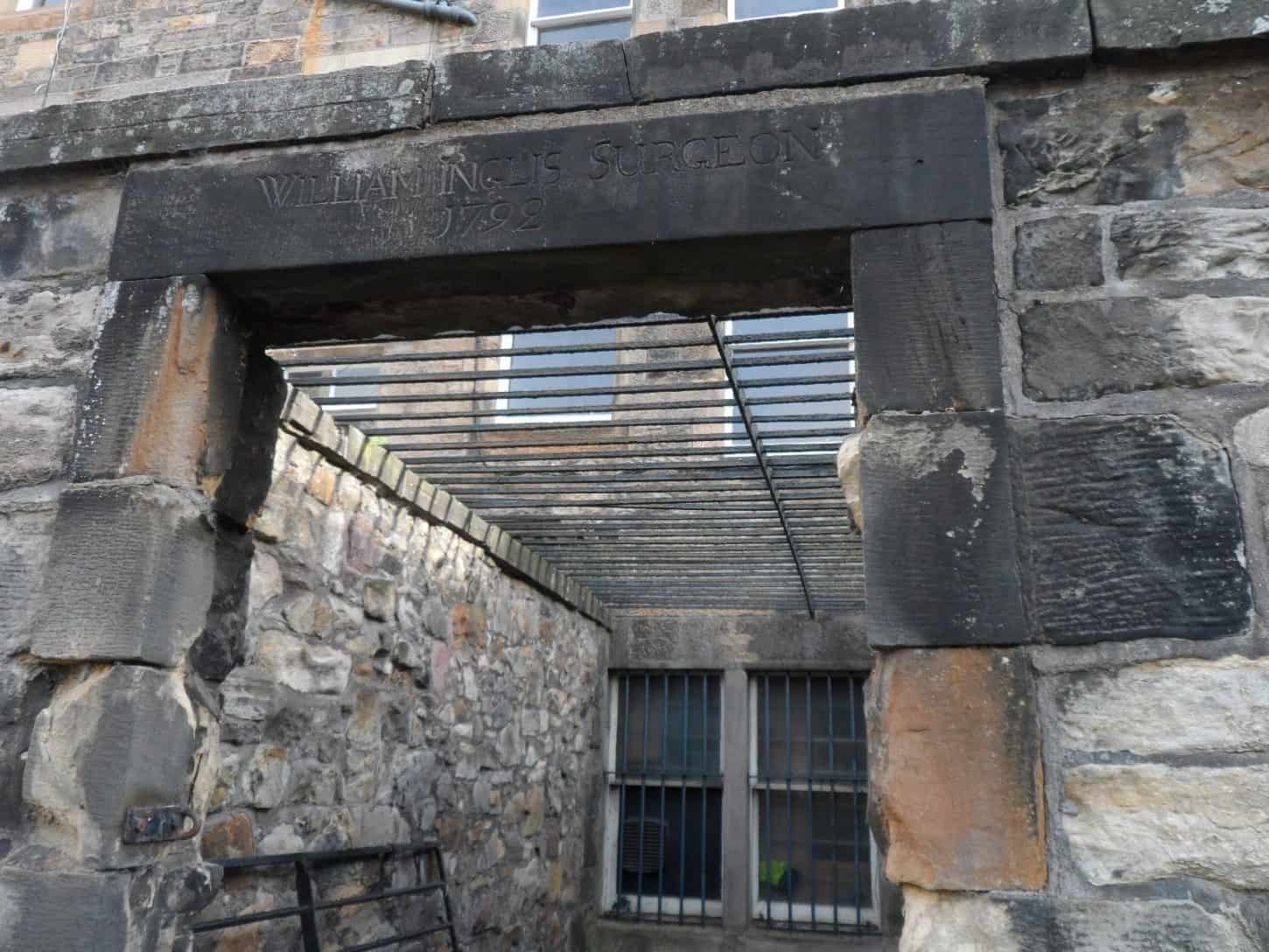
The Graves Of Alexander Monro Primus & Secundus
Naturally, you’re going to find the graves of some of Edinburgh’s most eminent surgeons in Greyfriars and because my interest lies predominantly with body snatching the darker side of the history of medicine, it is their graves that I’m going to share with you here.
Most notable amongst these graves is the caged lair of surgeon William Inglis, mentioned above, but there are plenty of other surgeons of note buried here too.
Other surgeons instrumental in the body snatching movement include Monro Primus and Secundus whose family gravestone is a rather subdued affair compared to other monuments on the site.
The Monro Dynasty
This father and son dynasty appear at the start of the body snatching era and are associated with the Medical School at the University of Edinburgh, where Alexander Monro Primus was appointed Professor of Anatomy in 1720, at the age of just 22, followed by his son, Alexander Monro Secundus, in 1758.
Keeping it in the family, the Monro dynasty continued when Alexander MonroTertius was appointed to the role in 1808.
Walking in the footsteps of two great anatomists proved hard for this in a long line of medical men and one well-known story about Alexander Monro Tertius is that he simply gave his lectures by reading from his grandfather’s notes which, much to the students’ delight included references to many events happening over 80 yrs previously.
You won’t find Monro Tertius in Greyfriars; however, for his grave, you’ll have to take a trip to Dean Cemetery elsewhere in Edinburgh.
A Wee Body Snatching Tale
My last grave to see at Greyfriars relates to the whole site, rather than just to one spot in particular.
It wouldn’t be right to have a post on the iconic Greyfriars Kirkyard and not include a wee body snatching tale or two, and it is Greyfriars that some of the earliest body snatching cases happened in Edinburgh.
The first-ever body snatching case to be recorded in Scotland dates from February 1678 and involves a 16yr old gypsy boy by the name of Shaw.
After what is thought to have been a clan battle, the teenager, together with three other family members were hanged for murdering a man from a rival family, the Faws. Following the hanging, the four bodies were taken to Edinburgh Greyfriars to be buried in one mass grave.
However, come the morning, it was discovered that the grave had been disturbed during the night and the body of the teenager had gone.
Lots of speculation surrounded his disappearance. Some thought that he had survived the hanging and had risen again, others believed that he had been stolen at the anatomists’ pleasure ‘to make an anatomical dissection of’.
A Further Body is Snatched
In May 1711, the year in which the medical students of Edinburgh were removing the deceased from their graves faster than they were being put in them, the corpse of Robert Findlay was taken from Edinburgh Greyfriars.
Many people immediately blamed the surgeons for the snatchings, including those linked to the Incorporation of Surgeons who to express their innocence in the matter threatened the very future of the students’ livelihood themselves; if they were caught to be violating graves, then they would be simply be expelled and their apprenticeship ended.
Public fury about the snatching was printed and published in a broadside with the opening lines being ‘An Account of the most Horrid and Unchristian Actions of the Grave Makers in Edinburgh, their Raising and Selling of the Dead, abhorred by Turks and Heathens, found out in this present Year 1711, in the month of May.’
The complete text can be read for FREE on the National Library of Scotland’s website and their extremely popular ‘Word On The Street’, but I’ll share a few lines with you here so you can get a feel:
O Young and Old, which is most strange to me, What kind of Resurrection this may be, I thought GOD had reserv’d this Power alone Unto Himself, till He Erect,d His Throne. In to the clouds with his attendance by That He the World might Judge in Equity. But now I see the contrary In our land, Since Men do raise the Dead at their own hand ; Aid for to p’ease their Curiosities, they them Disstinct and make Anatomies.
Not that expressing their innocence in the matter really did any good however for further clauses were inserted into the students’ indentures in 1721, expressly stating that they were forbidden to steal cadavers for their anatomy lectures.
We know these clauses didn’t work. Body snatching was to rumble on throughout the city, raids on kirkyards being carried out both by students and professional body snatchers, right up until that fateful day in October 1828 when murders of Burke and Hare were discovered.
They would continue throughout Britain until the passing of the 1832 Anatomy Act when they would gradually begin to peter out. There are many more stories still to be told relating to the magnificent site that is Greyfriars Kirkyard.
Want To Read More About Edinburgh’s Greyfriars?
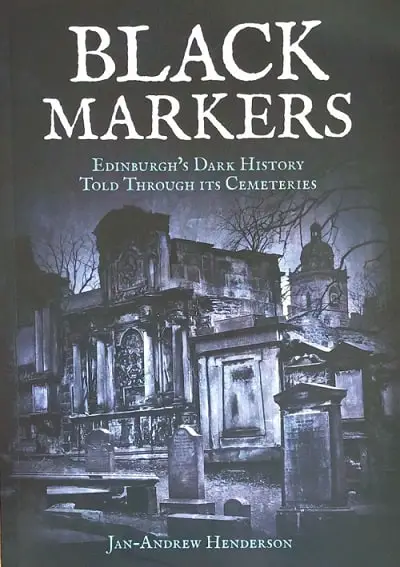
Black Markers by
Jan-Andrew Henderson
I received this book as a gift one Christmas and quickly thumbed through it to see what I’d been missing during my trips to Edinburgh.
If like me you want to discover something that will take you off Edinburgh’s Royal Mile then this could well be the book for you.
Weaving the history of Edinburgh into the history of its graveyards, the story of the city’s dead is told in glorious technicolour.
Packed with images and history I hadn’t even heard of, it’s definitely one to add to your reading list before you explore this beautiful city.
You can find copies online here


